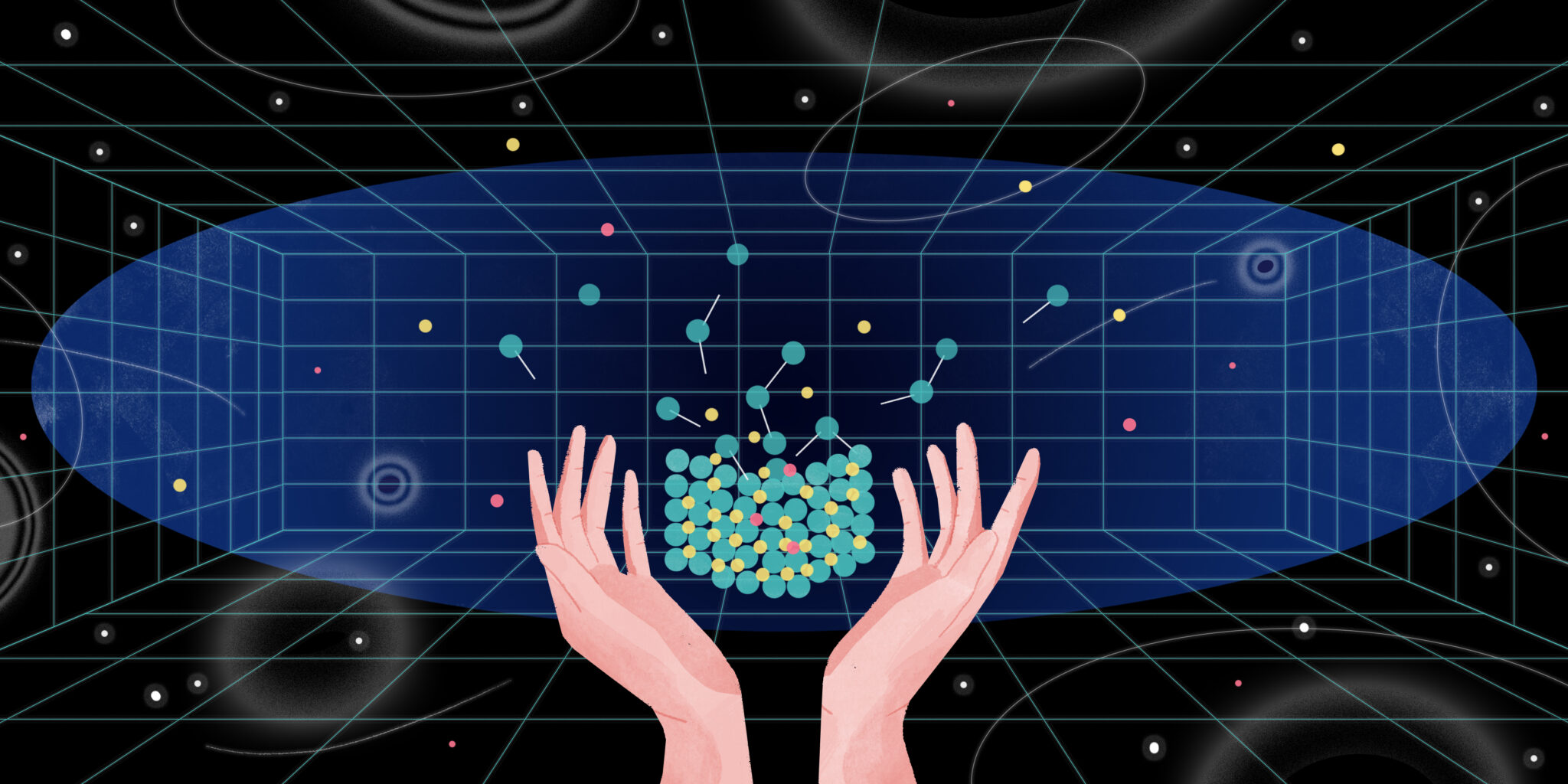Emergence describes the distinct patterns and behaviors that can arise out of complex systems.
Some emergent phenomena take the form of simplicity emerging from complexity: temperature and density are properties relating to the motion and arrangement of large groups of atoms or molecules. Spinning galaxies, biological organisms, and human societies behave in ways that can be elegantly described and predicted. Other types of emergence involve incredible complexity emerging and propagating from simple elements, as with the emergence of life from simpler pre-biotic chemistries on early Earth, or the emergence of the Universe’s structure in the first microseconds after the Big Bang.
Strong and Weak Emergence
“Emergence” takes on different meanings depending on what it’s being used to describe. Sometimes “emergent” is simply used to mean “coming into being.” When used in a more technical sense, though, conceptions of emergent phenomena are often divided between “weak” and “strong.” Cases of weak emergence would imply that the whole only appears to exceed the sum of its parts, but with enough knowledge the equation would even out. Weakly emergent systems are difficult to track and predict due to their complexity, but not because their nature is fundamentally new. Some philosophers even contend that all apparent emergence is weak — that it is largely an illusion brought about by the limitations of human perspective and knowledge.
Strong emergence applies to systems where the whole really is more than the sum of its parts — meaning that the emergent property cannot be understood or predicted based only on an understanding of its components. Evidence for strong emergence could include the appearance of novel physical laws or global phenomena (such as the asymmetry of time, or superconductivity). Some have argued that chemistry itself is an example of strong emergence, since chemical properties do not seem to be not fully derivable from the subatomic particles involved.
-

Emergence. Illustration by Jin Xia.
Emergence in Physics
One example of emergent behavior in physics involves one of the simplest to observe: phase changes in matter. Ice, water and steam are chemically identical but have distinct physical properties. Recently, condensed-matter physicists have discovered a wealth of new, distinct and sometimes mysterious additional phases of matter, including soft matter, superconductors, topological phases, and even time crystals. Many of these have properties that don’t seem to be predictable based on their constituent molecules.
Emergence may also be the apparent relationship between the successful but mutually inconsistent theories of general relativity and quantum field theory. Many candidates for a deeper theory suggest that spacetime does not exist at the most basic level but rather emerges from the interactions of more basic components. Similarly, some theorists argue that three-dimensional space may emerge from quantum interactions on a two-dimensional surface.
Emergence in Biology
Many of the questions of biology trace the development of complex systems from simpler components: life emerges from chemistry; multicellular organisms emerge from single-celled entities; populations emerge from individuals; minds emerge from connected neurons.
Biological evolution is studied as an emergent phenomenon, and recent efforts are investigating whether some of the genetic changes sifted by natural selection are not entirely random but emerge via a vast array of mutational mechanisms.
Concepts of emergence are helpful as biologists navigate and translate between radically different scales, from molecules in the genome to entire ecosystems. Biologists are working to develop new ways to model and predict the behavior of active systems, from collective molecular motion to animal swarms.
Top-Down and Bottom-Up
Differences of scale figure in discussions of emergence across many fields. Approaches to modeling from the top down (starting, for instance, from what can be observed about how complex systems like galaxies or societies behave) often eventually reach a disjuncture with models that start from the bottom up (beginning with individual genes or subatomic particles). In physics, the disjunct between the bottom-up discoveries of quantum mechanics and the top-down observations of general relativity makes clear that we lack a unified physical theory. Philosophers and scientists are still working to bridge the kinds of insights and attendant weaknesses that both top-down and bottom-approaches can bring in our attempts to understand some of the universe’s biggest, and smallest, questions.
Still Curious?
Science writer George Musser explores the concept of emergence in this white paper focusing on new insights about phase changes in matter, and recent discoveries in quantum physics.
The John Templeton Foundation has supported many projects that touch on emergence, including Bridging Across Scales, The Physics of Emergence, Multiscale Organizational Principles, and Quantum Biology
Key Takeaways
-
Emergence describes the distinct patterns and behaviors that can arise out of complex systems
-
Some forms of emergence look like simplicity arising out of complexity; others exhibit complexity coming from simple building blocks
-
Cases of apparent emergence can be described as strong or weak. Weakly emergent systems are difficult to track and predict due to their complexity, but not because their nature is fundamentally new. Strong emergence describes properties that cannot be understood or predicted based only on an understanding of their components.
-
Differing phases of matter — such as solid, liquid, and gas — are one of the most familiar physical examples of emergent properties
-
Emergence helps biologists navigate and translate between radically different scales, from molecules in the genome to entire ecosystems

